
CAVE 26 AJANTA
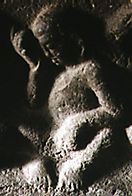

Cave 26 is actually a complex of caves: a large caitya
hall and two side viharas (Cave 26L and Cave 26R). According to the inscription,
these caves were donated by a monk named Buddhabhadra.
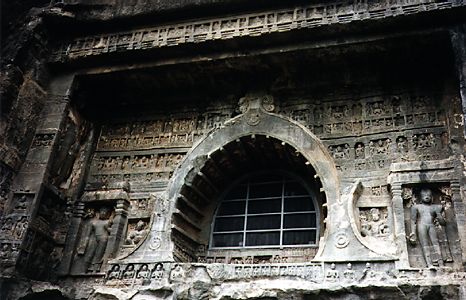
The entire facade of Cave 26 is covered in Buddhas and
related images, many of which were probably added after Buddhabhadra's involvement
with the cave. This overflow of intrusive imagery indicates regular use
and popularity of the cave image.
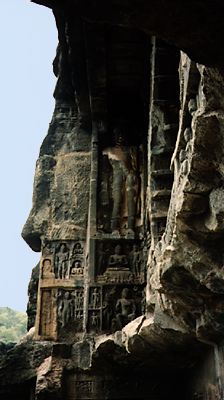
The Cave 26 complex had a large courtyard, connecting the
right and left wings to the main cave. The facade may have originally been
more elaborate as well, with a deep porch (the cliff has crumbled away).
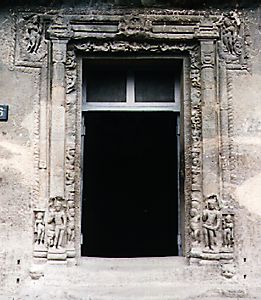
The door is in late Gupta style, with a T-shape, and the
river goddesses in the corners not supported by the pilasters. This indicates
that Cave 26 was one of the latest caves to be excavated at the site.
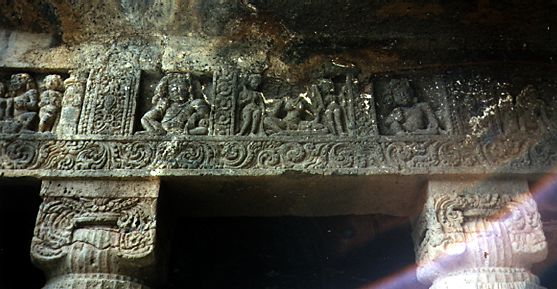
The Laksmi-Hariti image over the door of the porch cell
suggests origins in Gandhara, though the style is clearly Vakataka: smooth,
massive volumes.
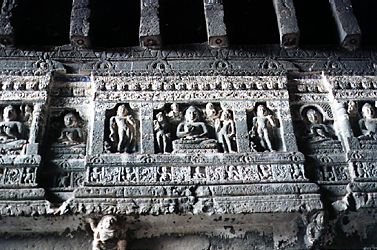
The interior is also elaborately carved, with a frieze
of Buddhas and attendants running along the corbel, and the "beams"
carved and painted.
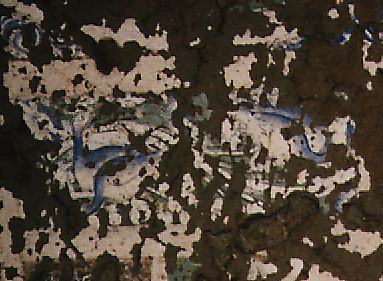
The ambulatory ceiling was painted with an elaborate lotus
lake motif, seen in many of the caves at Ajanta. Here, several geese sport
amid lotud buds. The blue pigment used forthis scene was made from lapis,
and would have been very expensive.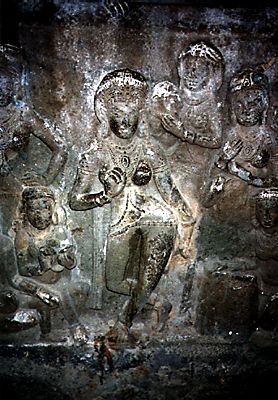
Mara's Daughter dances to tempt Siddhartha from
becoming the Buddha.
The walls of the ambulatory are carved with scenes of the
Buddha's life and miracles, including the Temptation by Mara, and the famous
colossal Parinirvana, with disciples mourning the Buddha on his deathbed.
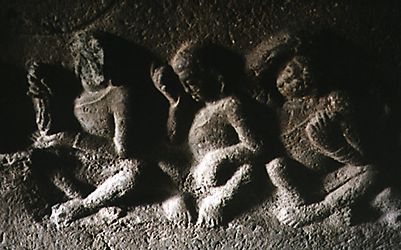
Cave 26R
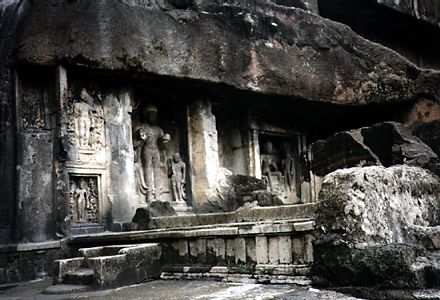
Cave 26R may have originally been intended as a vihara,
but became a collection of smaller shrines and niches. One of the most interesting
niches is one with an elaborate stone bed- an empty bed.
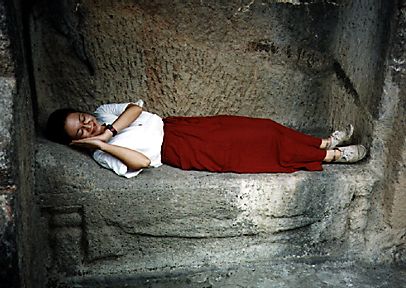
One of our participants demonstrates
the size of teh bed- able to comfortaby accomodate a small person.
Whether this bed was intended for a monk (perhaps Buddhabhadra
himself?) or a Parinirvana image is unknown. It was common to have wooden
images of the dying Buddha set upon stone beds like the one in 26R, but
there are no motice-holes to hold an image onto the bed.


 Have pictures
of Cave 26 you would like to share? Please contact me!
Have pictures
of Cave 26 you would like to share? Please contact me!
 Return to the Ajanta
Site page.
Return to the Ajanta
Site page.
![]()










